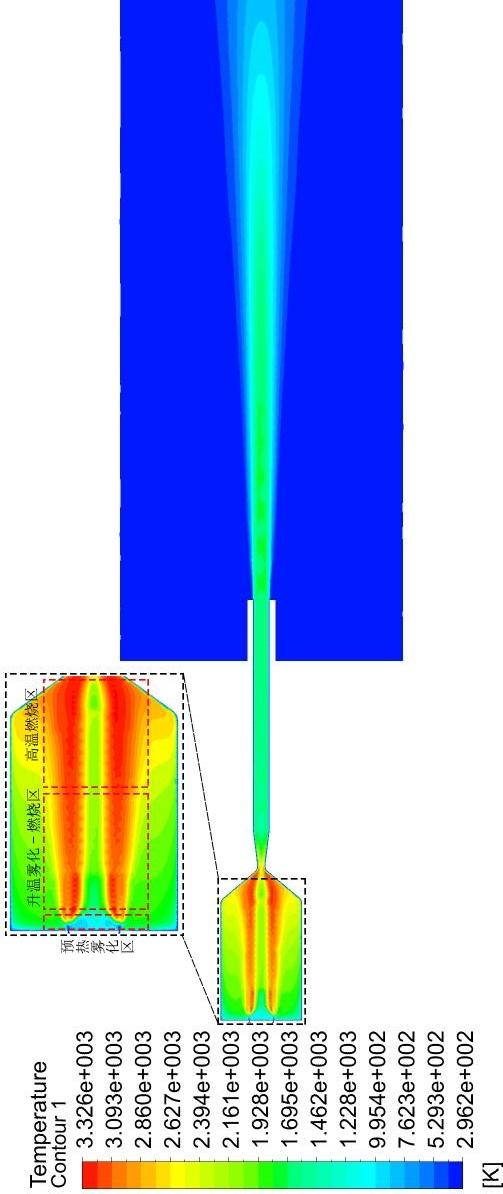The flame flow temperature was analyzed at a primary nitrogen pressure of 2 MPa, as shown in the figure. In the case of only primary nitrogen injection, the temperature zone inside the combustion chamber shows a double cone diffusion-like change, in which the atomization nozzle jet zone has the highest temperature and gradually decreases in the direction of the axis and both sides of the combustion chamber.
According to the trend of temperature change along the axis, the combustion reaction is mainly divided into three regions: preheating atomization zone, warming atomization-combustion zone, and high temperature combustion zone. In the preheat atomization zone, kerosene is split into tiny droplets with Gaussian distribution of particle size by using the double airflow jet breaking mechanism of the atomization nozzle. The temperature in this region is low, mainly dominated by kerosene atomization phenomenon. In the heating atomization-combustion zone, the droplets with small particle size are atomized and burned rapidly in the upstream of the combustion chamber in contact with oxygen, so that the internal temperature of the combustion chamber increases rapidly; the droplets with slightly larger particle size are broken up in this zone due to high temperature and continue their atomization process. In the high-temperature combustion zone, the slightly larger droplets gradually break into multiple small droplets and burn out in the middle and lower reaches of the combustion chamber. The temperature in this region rises slowly and finally reaches a peak temperature of 3326 K.






















